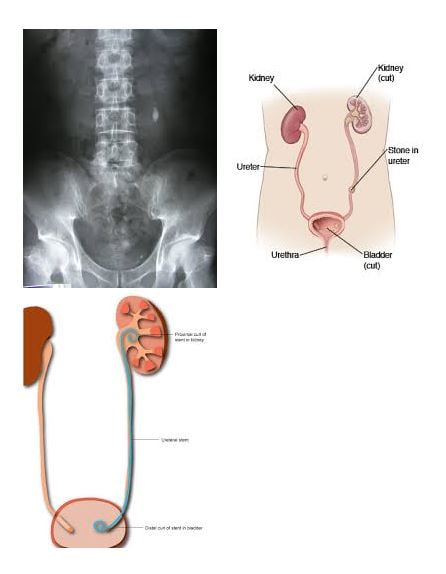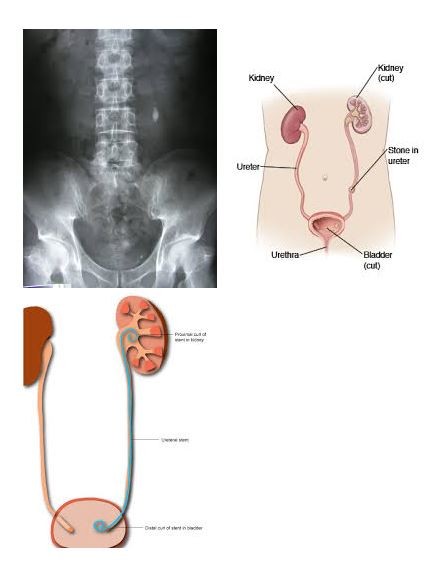Ureteric stones
Ureteric stones are very common especially in a hot country like India. Stones form in kidney and may remain there without giving trouble for many years. They can grow and when it becomes sufficient size can drop down into the tube draining urine from kidney (called ureter).
If a kidney stone drops out of the kidney into the ureter pipe this can block the kidney and this causes excruciating pain. Women say this pain can be even worse than the pain of labour. This pain is called renal colic. It is often associated with a feeling of nausea and vomiting and sometimes also with an increasing need to pass urine. Blood may also be seen in the urine and it is something the doctor will check for before making a diagnosis of renal colic. Occasionally a stone may block the ureter in the presence of a urine infection. In these cases, a patient may feel hot, sweaty and have the chills or shake. This requires emergency treatment to unblock the kidney to stop the bugs (infection) in the urine escaping into the bloodstream.
Diagnosis
After clinical examination, we usually advice blood and urine tests and request for a CT scan of the abdomen. Occasionally, we do ask for an ultrasound scan of the abdomen if the diagnosis of stone is doubtful.
This will tell us if stones are present, where the stone is and size of the stone.
If the stone is small, then you may be advised medicines only and asked to wait for the stone to pass by itself. You will be asked to drink plenty of fluids during the waiting period. If the stone has not passed after a certain time period, then surgery is advised.
During the waiting period if the pain reoccurs repeatedly or if fever occurs then surgery may be advised immediately. If blood test called creatinine goes up then again immediate surgery is advised.
Surgical Management
If stone is large or has not passed after a certain period or if fever occurs or if creatinine has gone up then surgery is advised.
This will involve placing a camera into your urine pipe under anaesthetic and seeing the stone and breaking it up with laser or a driller machine. At the end of the procedure a small plastic tube called stent is placed in the ureter to prevent blockage to the kidney. This stent will be removed after few days under local anaesthetic.
This operation usually involves overnight stay in the hospital.
For more information on ureteroscopy- click here.










